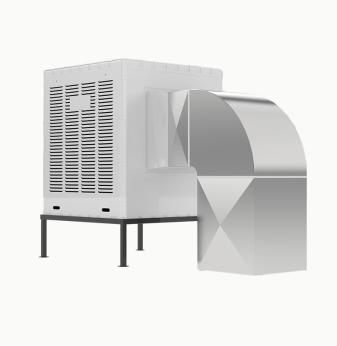Strategic Integration of AI into Embedded Systems: Challenges and Opportunities

As artificial intelligence becomes a driving force across industries, its integration into embedded systems marks a transformative shift in how smart devices operate and interact with the world. This evolution unlocks unprecedented capabilities, enabling real-time decision-making, predictive analytics, and intelligent automation at the edge.
In this article, we explore the strategic implications of integrating AI into embedded systems, the key challenges companies face, and the architectural decisions that can define project success.
Why AI in Embedded Systems Is Gaining Momentum
Traditionally, embedded systems were designed to handle specific, repetitive tasks with limited computing resources. However, the growing demand for autonomous and context-aware functionality has accelerated the adoption of AI techniques like machine learning (ML), computer vision, and neural network inference directly on the edge devices.
This integration brings significant benefits:
- Reduced latency — decisions happen locally without cloud round-trips
- Enhanced privacy — sensitive data stays on the device
- Greater autonomy — enabling devices to adapt to changing environments
- Lower bandwidth usage — only essential data is transmitted
These benefits are particularly valuable in applications such as industrial automation, automotive systems, medical devices, smart home products, and security systems.
Key Questions About AI Integration into Embedded Systems
How can embedded systems handle the computational demands of AI workloads?
Thanks to modern AI accelerators (e.g., GPUs, TPUs, NPUs) and optimized ML libraries, it's now feasible to run complex models even on resource-constrained hardware. Architecting systems around efficient frameworks (e.g., TensorFlow Lite, ONNX Runtime, TVM) ensures optimized performance.
What’s the best approach to balancing power consumption and AI performance in embedded devices?
Designers can use quantized or pruned models to reduce computation overhead. Dedicated AI chips, dynamic frequency scaling, and smart scheduling of inference tasks also help balance power and performance.
What are the most common mistakes in deploying AI on embedded systems?
- Overestimating hardware capabilities
- Underestimating thermal and power limits
- Relying on cloud-trained models without edge-specific optimization
- Ignoring model explainability or safety constraints in critical systems
How can engineers ensure real-time performance for AI tasks?
Using real-time operating systems (RTOS), prioritizing tasks with deterministic scheduling, and ensuring low-latency interconnects between sensors and AI engines are key factors.
Essential Components of AI-Embedded Architectures
Successful AI integration demands a thoughtful hardware-software co-design strategy:
1. Hardware Accelerators
- Edge AI chips from vendors like NVIDIA (Jetson), NXP, Intel, and Rockchip
- FPGAs for parallel processing and customization
- ASICs and SoCs with built-in AI cores
2. Efficient Model Deployment
- Frameworks: TensorFlow Lite, PyTorch Mobile, OpenVINO
- Optimizations: quantization, pruning, knowledge distillation
- Model compression tools to meet memory and speed constraints
3. RTOS and Embedded Linux Support
- Lightweight systems for real-time predictability
- Drivers and runtime environments tailored for specific hardware
4. Data Pipeline and Preprocessing
- Sensor fusion, signal processing, and normalization directly on the device
- Edge-level analytics to detect anomalies, events, or trends

Security and Privacy in AI-Embedded Systems
Security becomes even more critical as devices process sensitive data using AI. Best practices include:
- Secure boot and firmware updates
- AI model encryption and integrity validation
- On-device anonymization and differential privacy
- Intrusion detection using AI-based behavior modeling
Opportunities by Industry
- Telecom — AI-embedded network devices optimize bandwidth usage, detect anomalies, and support predictive maintenance.
- Automotive — AI enhances ADAS, DMS, and infotainment through real-time perception and decision-making.
- Medical Devices — AI enables portable diagnostics, health monitoring, and condition prediction.
- Smart Home — Personalized voice recognition, activity monitoring, and automation are powered by embedded AI.
- Retail — Computer vision on embedded cameras detects product movement, shopper patterns, and inventory levels.
Future Trends in AI for Embedded Systems
- Edge AI model marketplaces for easier deployment and monetization
- Federated learning for privacy-preserving training on distributed devices
- Neuromorphic computing to mimic biological systems and reduce energy needs
- AI-based chip design automation to reduce time-to-market
Why Partner with Promwad for AI-Embedded Systems
At Promwad, we bring together cross-disciplinary expertise in electronics design, embedded software, and machine learning to help you launch AI-powered products that meet your business and technical goals.
Our edge AI services include:
- Hardware selection and optimization for AI tasks
- Custom embedded software and ML model integration
- Real-time system architecture with RTOS or embedded Linux
- Security, privacy, and certification support
- Rapid prototyping and production engineering
Let’s bring intelligence to your embedded products — talk to our team.
Our Case Studies








